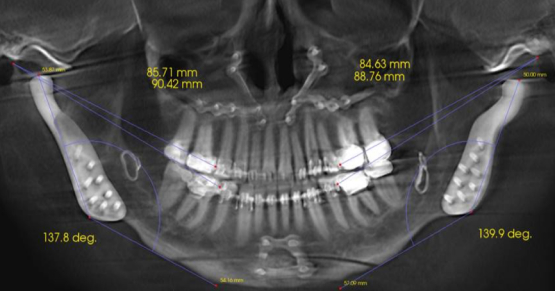5 Ways To Improve Implant Crown Cementation
It’s important to ensure proper cementation for implant crowns. The following ideas will help you achieve the best results:
Manage the opening for the abutment screw
Close the abutment screw hole with PTFE tape (Teflon). The tape can be sterilized and does not pick up a bad odor. It is radiopaque and easy to clean and remove if needed.1 You should leave most of the screw hole/chamber in the abutment open. This acts as a reservoir for excess cement and does not adversely affect the retention.
Use an appropriate amount of cement
Remember there is just enough room for a thin cement layer between the abutment and crown — about two coats of nail varnish. This is about 3% of the total internal volume of the crown, and is all the cement needed. Apply the cement near to but not including the crown margin. As the crown is seating, the cement will flow “upward,” towards the occlusal table of the abutment. Once it reaches the occlusal table, the vector of forces will be now perpendicular to the horizontal plane of the occlusal table; at this point, the cement will start moving toward the prep margin and excess will be extruded out.
Use PVS copy abutment
Conducting a “trial cementation” on a duplicate of the abutment outside the mouth can simplify the cleanup process. Follow these steps:
- Paint KY Jelly on the internal surface of the implant crown.
- Adapt PTFE (Teflon) to the inside surface. Use a dry brush and place the crown on the abutment to adapt the tape. This acts as a 50-micron-thick spacer.
- Fill the inside of the crown with a fast-setting PVS material. Overfill to make a handle as well. Make markings to ensure easy identification and orientation.
- Remove this copy of the crown abutment from the crown, remove the tape, and clean the intaglio surface of the crown.
- This copy of the abutment, also known as a pre-extrusion device, is approximately 50 microns smaller than the abutment. It is now ready for use.
- Place the abutment and load it with correct torque.
- Load the crown with the cement, push the PVS copy abutment into the crown, and clean the excess cement, which is easy because it is done outside the mouth
- Pull the crown off and inspect the intaglio surface. Add cement if you find any “bare areas.” Now seat the crown in the mouth on the abutment.
- This technique limits the excess cement to an absolute minimum and makes cleanup quick and easy.
Modify the abutment design
A design variation of creating an internal vent has been suggested. Vent is created 3 mm from the occlusal table.2 Two vents on the axial surface, 180° opposite to each other, are placed. The abutment screw access hole is closed with PTFE and remaining space left open as described above. Cement is loaded following the technique steps described above. Wadhwani and colleagues, in their study,2 showed that this modification results in better extrusion of excess cement and better seating.
Use a retraction cord
In an earlier post, Dr. Winter described a technique of using two pieces of retraction cord, one from the buccal and one from the lingual, to allow for easy clean up of excess cement.
References
- Moraguez OD, Belser UC. The use of polytetrafluoroethylene tape for the management of screw access channels in implant-supported prostheses. J Prosthet Dent. 2010 Mar; 103(3):189–91.
- Wadhwani C, Pineyro A, Hess T, Zhang H, Chung KH. Effect of implant abutment modification on the extrusion of excess cement at the crown-abutment margin for cement-retained implant restorations. Int J Oral Maxillofac Implants. 2011 Nov-Dec; 26(6):1241–6.
FOUNDATIONS MEMBERSHIP
New Dentist?
This Program Is Just for You!
Spear’s Foundations membership is specifically for dentists in their first 0–5 years of practice. For less than you charge for one crown, get a full year of training that applies to your daily work, including guidance from trusted faculty and support from a community of peers — all for only $599 a year.

By: Vivek Mehta
Date: June 20, 2013
Featured Digest articles
Insights and advice from Spear Faculty and industry experts


